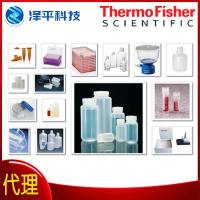RNA Purification and Quantification Methods
互联网
623
Analysis of gene expression within tumors is frequently performed on the messenger RNA (mRNA). This chapter first describes the purification of mRNA from either tissues or cell culture and then describes the quantification by ribonuclease protection assay.
Having initially purified the cellular RNA the technique of ribonuclease protection relies on generation of a radioactive probe of antisense messenger RNA that is homologous to, and therefore capable of hybridizing with, the complementary strand of endogenous sense mRNA. A cocktail of single-strand-specific ribonucleases is then added to degrade any regions of the probe not protected by hybridization. Double-stranded mRNA, which is resistant to ribonuclease degradation, is then separated by polyacrylamide gel electro-phoresis (a technique already described in Chapter 11 by Blancher and Jones) and subsequently detected by autoradiography.
Premature contamination with ribonucleases that are both stable and active is one of the main reasons for the failure of these techniques. Contamination with exogenous ribonucleases is avoided by the following (1) Gloves should be wornskin is a plentiful source of ribonucleases. (2) Plasticware not touched by ungloved hands can be considered ribonuclease free. All glassware should be baked at 250’300�C for at least 4 h or rinsed with chloroform before use. (3) All solutions should be made up with water treated overnight with diethylpyrocarbonate (DEPC) which inactivates ribonucleases by covalent modification.









